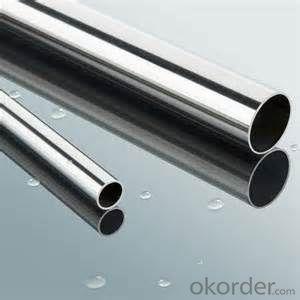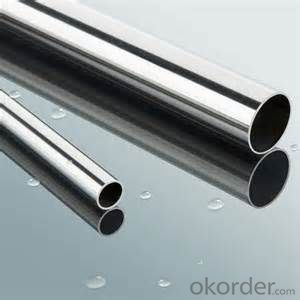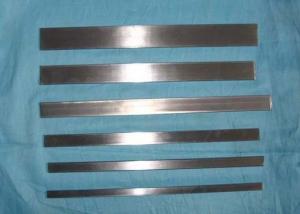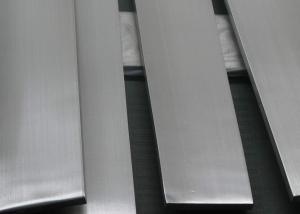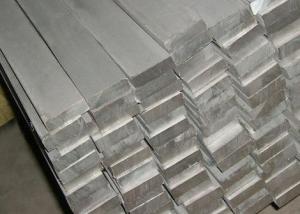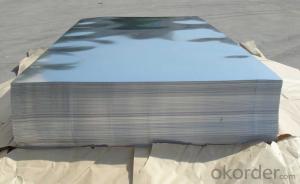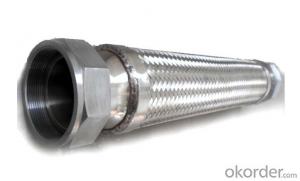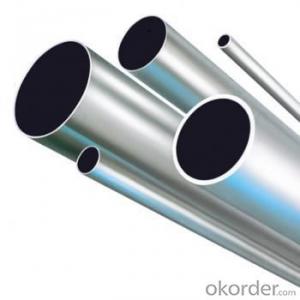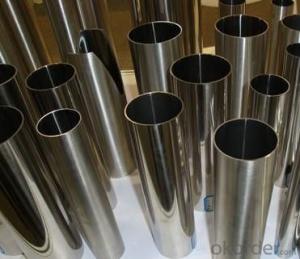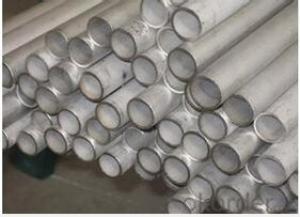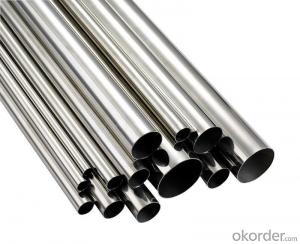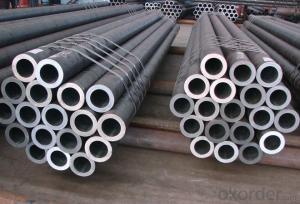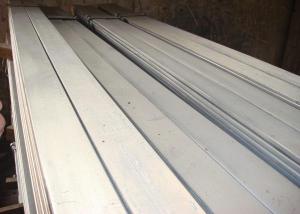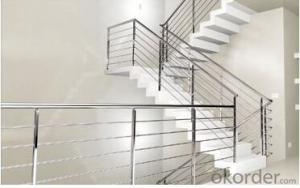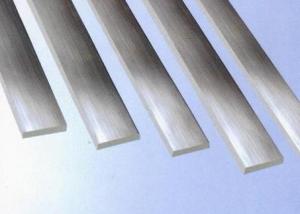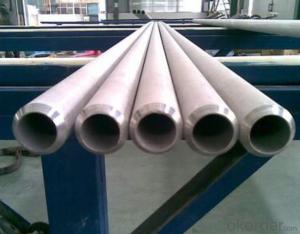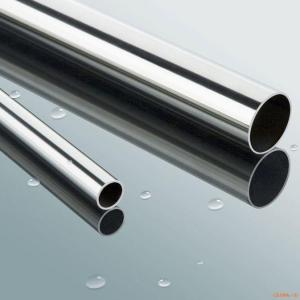Stainless steel pipes 304 pipe
- Loading Port:
- China Main Port
- Payment Terms:
- TT OR LC
- Min Order Qty:
- -
- Supply Capability:
- -
OKorder Service Pledge
OKorder Financial Service
You Might Also Like
In metallurgy, stainless steel, also known as inox steel or inox from French "inoxydable", is a steelalloy with a minimum of 10.5% chromium content by mass.
Stainless steel does not readily corrode, rust or stain with water as ordinary steel does. However, it is not fully stain-proof in low-oxygen, high-salinity, or poor air-circulation environments There are different grades and surface finishes of stainless steel to suit the environment the alloy must endure. Stainless steel is used where both the properties of steel and corrosion resistance are required.
Stainless steel differs from carbon steel by the amount of chromium present. Unprotected carbon steel rusts readily when exposed to air and moisture. This iron oxide film (the rust) is active and accelerates corrosion by forming more iron oxide; and, because of the greater volume of the iron oxide, this tends to flake and fall away. Stainless steels contain sufficient chromium to form a passive film of chromium oxide, which prevents further surface corrosion by blocking oxygen diffusion to the steel surface and blocks corrosion from spreading into the metal's internal structure, and, due to the similar size of the steel and oxide ions, they bond very strongly and remain attached to the surface
High oxidation resistance in air at ambient temperature is normally achieved with additions of a minimum of 13% (by weight) chromium, and up to 26% is used for harsh environmentsThe chromium forms a passivation layer of chromium(III) oxide (Cr2O3) when exposed to oxygen. The layer is too thin to be visible, and the metal remains lustrous and smooth. The layer is impervious to water and air, protecting the metal beneath, and this layer quickly reforms when the surface is scratched. This phenomenon is called passivation and is seen in other metals, such as aluminium and titanium. Corrosion resistance can be adversely affected if the component is used in a non-oxygenated environment, a typical example being underwater keel bolts buried in timber.
When stainless steel parts such as nuts and bolts are forced together, the oxide layer can be scraped off, allowing the parts to weld together. When forcibly disassembled, the welded material may be torn and pitted, an effect known as galling. This destructive galling can be avoided by the use of dissimilar materials for the parts forced together, for example bronze and stainless steel, or even different types of stainless steels (martensitic against austenitic). However, two different alloys electrically connected in a humid environment may act as Voltaic pile and corrode faster. Nitronic alloys made by selective alloying with manganese and nitrogen may have a reduced tendency to gall. Additionally, threaded joints may be lubricated to prevent galling.
Stainless steel is generally highly resistant to attack from acids, but this quality depends on the kind and concentration of the acid, the surrounding temperature, and the type of steel. Type 904 is resistant to sulfuric acid at room temperature, even in high concentrations, type 316 and 317 are resistant below 10% and 304 should not be used at any concentration. All types of stainless steel resist attack from phosphoric acid, 316 and 317 more so than 304; and Types 304L and 430 have been successfully used with nitric acid. Hydrochloric acid will damage any kind of stainless steel, and should be avoided.
The 300 series of stainless steel grades is unaffected by any of the weak bases such as ammonium hydroxide, even in high concentrations and at high temperatures. The same grades of stainless exposed to stronger bases such as sodium hydroxide at high concentrations and high temperatures will likely experience some etching and cracking, especially with solutions containing chlorides.
Types 316 and 317 are both useful for storing and handling acetic acid, especially in solutions where it is combined with formic acid and when aeration is not present (oxygen helps protect stainless steel under such conditions), though 317 provides the greatest level of resistance to corrosion. Type 304 is also commonly used with formic acid though it will tend to discolor the solution. All grades resist damage from aldehydes and amines, though in the latter case grade 316 is preferable to 304; cellulose acetate will damage 304 unless the temperature is kept low. Fats and fatty acids only affect grade 304 at temperatures above 150 °C (302 °F), and grade 316 above 260 °C (500 °F), while 317 is unaffected at all temperatures. Type 316L is required for processing of urea
- Q: What brand of stainless steel pipe cutting machine is good?
- Cut stainless steel tube, choose what brand is good, not the most important, first of all depends on what method to cut the best, the current cutting methods are saw blade, saw blade, laser, plasma, turning tools and so on.
- Q: Do stainless steel pipes require any special maintenance?
- Stainless steel pipes do not require any special maintenance as they are known for their durability and resistance to corrosion. However, regular cleaning and inspection are recommended to ensure optimal performance and longevity. This can be done by using mild soap and water or a non-abrasive cleaner to remove any dirt or grime that may accumulate on the surface. Additionally, inspecting the pipes for any signs of damage or leaks is important to address any issues promptly. Overall, stainless steel pipes are relatively low maintenance and can provide years of reliable service with proper care.
- Q: Are stainless steel pipes suitable for petrochemical plants?
- Yes, stainless steel pipes are highly suitable for petrochemical plants. They possess excellent corrosion resistance, high temperature strength, and durability, making them ideal for handling various aggressive chemicals and fluids found in petrochemical processes. Additionally, stainless steel pipes can withstand high pressure and maintain their structural integrity, ensuring the safety and longevity of the plant's operations.
- Q: What are the temperature limits for stainless steel pipes?
- The temperature limits for stainless steel pipes are dependent on the particular grade of stainless steel that is being utilized. In general, stainless steel pipes have the ability to endure high temperatures, rendering them suitable for a wide array of applications. For austenitic stainless steel grades like 304 and 316, the temperature limits typically span from -250°C to 925°C (-418°F to 1,700°F). These grades showcase outstanding resistance to corrosion and have the capacity to retain their mechanical properties at elevated temperatures. On the other hand, ferritic stainless steel grades, such as 430, possess slightly lower temperature limits, usually ranging from -150°C to 815°C (-238°F to 1,499°F). Although these grades offer commendable resistance to corrosion, they have reduced thermal conductivity and may experience decreased strength at high temperatures when compared to austenitic grades. It is crucial to keep in mind that the temperature limits can differ based on factors such as pipe thickness, surface condition, and the specific application at hand. It is highly recommended to seek advice from the manufacturer or consult relevant design codes to ascertain the precise temperature limits for a particular stainless steel grade and application.
- Q: How do stainless steel pipes compare to carbon steel pipes?
- Stainless steel pipes are generally more resistant to corrosion and rust than carbon steel pipes. They have higher strength and durability, making them suitable for various applications, including those requiring high pressure or extreme temperatures. While carbon steel pipes are typically more affordable, they are susceptible to corrosion and may require additional protective coatings. Ultimately, the choice between stainless steel and carbon steel pipes depends on the specific requirements and environment of the intended use.
- Q: Are stainless steel pipes more expensive than other types of pipes?
- Yes, stainless steel pipes are generally more expensive than other types of pipes. This is mainly due to the high cost of the raw materials used in the production of stainless steel, as well as the complex manufacturing processes involved. Stainless steel pipes also offer a range of advantages over other types of pipes, such as excellent resistance to corrosion, high durability, and the ability to withstand extreme temperatures. These factors contribute to their higher price point. However, the long-term benefits and superior performance of stainless steel pipes often justify the additional cost for many applications.
- Q: What are the common applications of stainless steel pipes in the construction industry?
- Due to their numerous advantageous properties, stainless steel pipes find extensive use in the construction industry. The construction industry commonly employs stainless steel pipes for various purposes, including: 1. Plumbing systems: The corrosion resistance, durability, and ability to withstand high pressure and temperature make stainless steel pipes highly sought-after in plumbing systems. These pipes are ideal for conveying water, gas, and other fluids in residential, commercial, and industrial buildings. 2. Structural support: Stainless steel pipes are widely utilized for providing support and stability in structural applications. They are frequently used in constructing load-bearing structures such as columns, beams, and other elements due to their exceptional strength and resistance to deformation. 3. Handrails and guardrails: The aesthetic appeal, low maintenance requirements, and durability of stainless steel pipes make them a popular choice for constructing handrails and guardrails. These pipes not only provide safety and security but also enhance the overall appearance of the building. 4. Ventilation and exhaust systems: In the construction of ventilation and exhaust systems, stainless steel pipes are often preferred. Their corrosion resistance and ability to withstand high temperatures make them suitable for transporting air and gases in commercial kitchens, factories, and other industrial facilities. 5. Balustrades and staircases: Stainless steel pipes are commonly employed in the construction of balustrades and staircases due to their strength, durability, and contemporary appearance. These pipes offer both functionality and aesthetic appeal, enhancing the overall design of the building. 6. Conduits for electrical wiring: Stainless steel pipes are utilized as conduits for electrical wiring in buildings. Their non-combustible nature and resistance to corrosion ensure a safe environment for routing electrical cables and wires. 7. Fire sprinkler systems: Fire sprinkler systems often incorporate stainless steel pipes due to their ability to withstand high temperatures and resist corrosion. These pipes ensure the effective and reliable distribution of water for fire suppression during emergencies. 8. Solar panel installations: Stainless steel pipes play a crucial role in the construction of solar panel installations. They are used to transport water or heat transfer fluids for solar thermal systems, contributing to the sustainability of the building. In conclusion, stainless steel pipes exhibit versatility and offer significant benefits in the construction industry. Their corrosion resistance, durability, strength, and aesthetic appeal make them an ideal choice for various applications, ensuring the longevity and functionality of buildings.
- Q: Are stainless steel pipes resistant to chlorine corrosion?
- Yes, stainless steel pipes are highly resistant to chlorine corrosion.
- Q: What is the difference between seamless and hot-finished stainless steel pipes?
- Seamless and hot-finished stainless steel pipes are both used in various industrial applications, but they have some key differences. The main difference between seamless and hot-finished stainless steel pipes lies in their manufacturing process. Seamless pipes are made by piercing a solid steel billet to form a hollow tube without any seams or joints. This process ensures a consistent wall thickness throughout the pipe and a smooth interior surface. On the other hand, hot-finished pipes are created by heating a solid billet and then rolling it to form a tube shape. This rolling process can result in a seam or weld line along the length of the pipe. Another significant difference between seamless and hot-finished stainless steel pipes is their dimensional accuracy and surface finish. Seamless pipes are known for their high dimensional accuracy and excellent surface finish, making them suitable for applications where a precise fit and smooth flow are critical, such as in the pharmaceutical or food processing industries. Hot-finished pipes, although generally not as precise in terms of dimensions and surface finish, are more cost-effective and widely used in applications where tight tolerances are not required, such as in structural or construction projects. In terms of strength and durability, both seamless and hot-finished stainless steel pipes offer excellent performance. However, seamless pipes tend to have higher strength due to their manufacturing process, as there are no weak points or potential areas of failure like welded seams. This makes seamless pipes preferred in applications that require high pressure or corrosion resistance, such as in oil and gas pipelines or chemical processing plants. In summary, the main differences between seamless and hot-finished stainless steel pipes lie in their manufacturing process, dimensional accuracy, surface finish, and strength. Seamless pipes are produced without any seams or welds, resulting in superior dimensional accuracy and surface finish, making them suitable for precise applications. On the other hand, hot-finished pipes are more cost-effective and widely used in applications where tight tolerances are not crucial. Both types of pipes offer excellent strength and durability, but seamless pipes are generally preferred in high-pressure or corrosive environments.
- Q: Can stainless steel pipes be used in the food processing industry?
- Yes, stainless steel pipes can be used in the food processing industry. Stainless steel is a popular choice for use in food processing due to its many beneficial properties. Firstly, stainless steel is resistant to corrosion, which is essential in an environment where food and liquids are constantly being processed and handled. Additionally, stainless steel is easy to clean and maintain, which is crucial in food processing to ensure hygiene and prevent contamination. Stainless steel pipes also have high strength and durability, allowing them to withstand the demanding conditions of the food processing industry. Moreover, stainless steel is non-reactive, meaning it does not interact chemically with food or ingredients, ensuring that the quality and taste of the processed products are not affected. Overall, stainless steel pipes are an excellent choice for the food processing industry due to their corrosion resistance, cleanliness, durability, and non-reactive properties.
Send your message to us
Stainless steel pipes 304 pipe
- Loading Port:
- China Main Port
- Payment Terms:
- TT OR LC
- Min Order Qty:
- -
- Supply Capability:
- -
OKorder Service Pledge
OKorder Financial Service
Similar products
Hot products
Hot Searches
Related keywords
